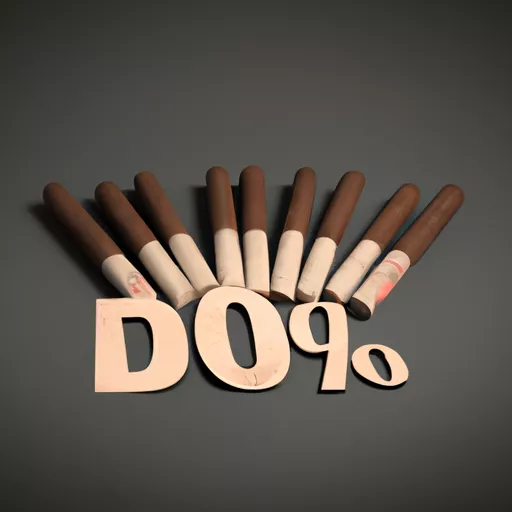
As someone who enjoys smoking, I’ve often found myself gravitating towards little cigars. These small, compact versions of traditional cigars have become quite popular in recent years for a variety of reasons. Despite their size, little cigars still pack a flavorful punch and offer a unique smoking experience. In this article, I will be delving into the world of little cigars and discussing their history, popularity, and different types.
First, let’s start with a bit of history. Little cigars have been around for centuries, dating back to the early 1800s. They were originally created as a way to use up excess tobacco leaves and scraps that were left over from the production of traditional cigars. These smaller cigars quickly gained popularity among working-class individuals who couldn’t afford the more expensive larger cigars. In the early 1900s, little cigars became known as “cigarette cigars” due to their similar size and packaging to cigarettes. They were often sold in packs of twenty, just like cigarettes.
However, in the 1970s and 1980s, little cigars faced a decline in popularity. This was due to the rise of cigarettes and their convenience factor. But in recent years, little cigars have made a comeback. With the rise of the craft cigar industry, little cigars have once again become a popular choice among cigar enthusiasts.
One of the main reasons for this resurgence in popularity is the variety of flavors available in little cigars. Traditional cigars are often seen as having a strong, distinct flavor, which can be off-putting to some. Little cigars, on the other hand, come in a wide range of flavors such as vanilla, cherry, and even chocolate. These flavors make little cigars more approachable and enjoyable for those who may be new to smoking cigars.
In addition to flavors, little cigars are also available in different sizes and shapes. Some may come in a long, thin shape similar to a traditional cigar, while others may come in a shorter, thicker shape resembling a cigarette. This variety allows smokers to find a little cigar that fits their personal preferences and smoking style.
Another reason for the popularity of little cigars is their affordability. Traditional cigars can be quite expensive, especially for those who smoke them regularly. Little cigars, however, are typically much cheaper, making them a more accessible option for the average smoker. This affordability factor also makes little cigars a popular choice for social gatherings or events where traditional cigars may be too expensive to share with a larger group.
As someone who smokes little cigars regularly, I have to say that one of the main reasons I enjoy them is their convenience. Unlike traditional cigars, little cigars do not require a cigar cutter or humidor. They can easily be stored in a pocket or bag, making them perfect for on-the-go smoking. This convenience factor also makes them a popular choice for travelers or outdoor activities where bringing a traditional cigar may not be feasible.
Now that we’ve covered the history and popularity of little cigars, let’s dive into the different types available. Broadly speaking, there are two types of little cigars – filtered and unfiltered. Filtered little cigars have a small, cotton-like filter at the end, similar to the filter on a cigarette. This filter helps to reduce the harshness of the smoke and makes for a smoother smoking experience. Unfiltered little cigars, on the other hand, do not have a filter and thus, offer a stronger, more robust flavor.
Within these two types, there are also a plethora of flavor and brand options. Some popular brands of little cigars include Swisher Sweets, Black & Mild, and Phillies. Each brand offers its own unique flavors and blends, giving smokers a wide range of choices to suit their preferences.
Personally, I tend to gravitate towards filtered little cigars for a smoother smoking experience. My go-to flavor is vanilla, which adds a subtle sweetness to the smoke. However, I also enjoy trying out new flavors and brands as it’s always fun to discover a new favorite.
In terms of smoking little cigars, the experience is quite similar to smoking a traditional cigar. I typically use a match or lighter to light the foot of the cigar and take slow, steady draws. The smoke is often thicker and smoother than that of a cigarette, and the flavor tends to develop more as you smoke. I find that little cigars have a richer and more complex flavor compared to cigarettes, giving a more enjoyable smoking experience overall.
However, as with any form of tobacco, it is important to smoke little cigars in moderation. Overconsumption can lead to negative health effects, so it’s crucial to be mindful of how often and how much you smoke. I personally like to enjoy a little cigar as a special treat or on occasions when I want to relax and unwind.
Overall, little cigars have come a long way since their humble beginnings in the 19th century. With their variety of flavors, sizes, and affordability, it’s no wonder they have become a popular choice among smokers. Whether you’re a cigar enthusiast or just looking to try something new, I highly recommend giving little cigars a try. Who knows, maybe they’ll become your new go-to smoke.
